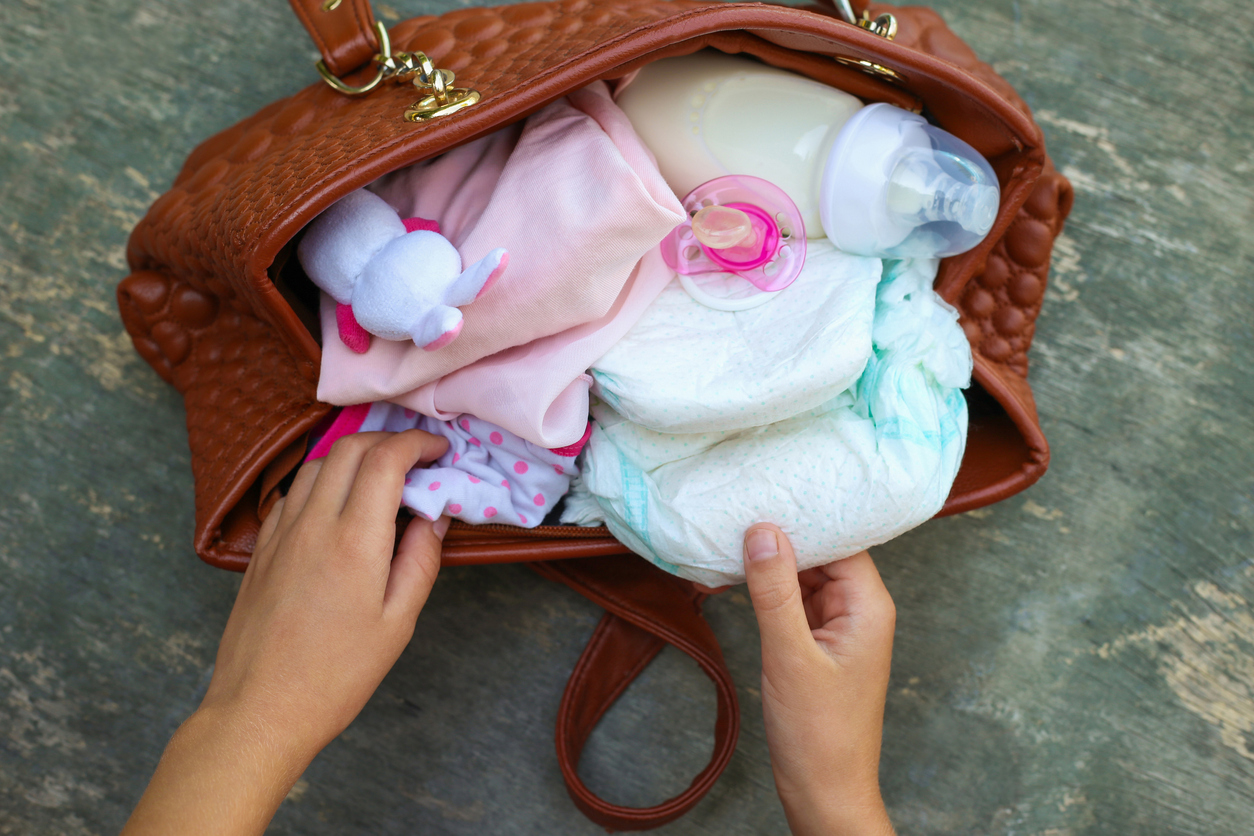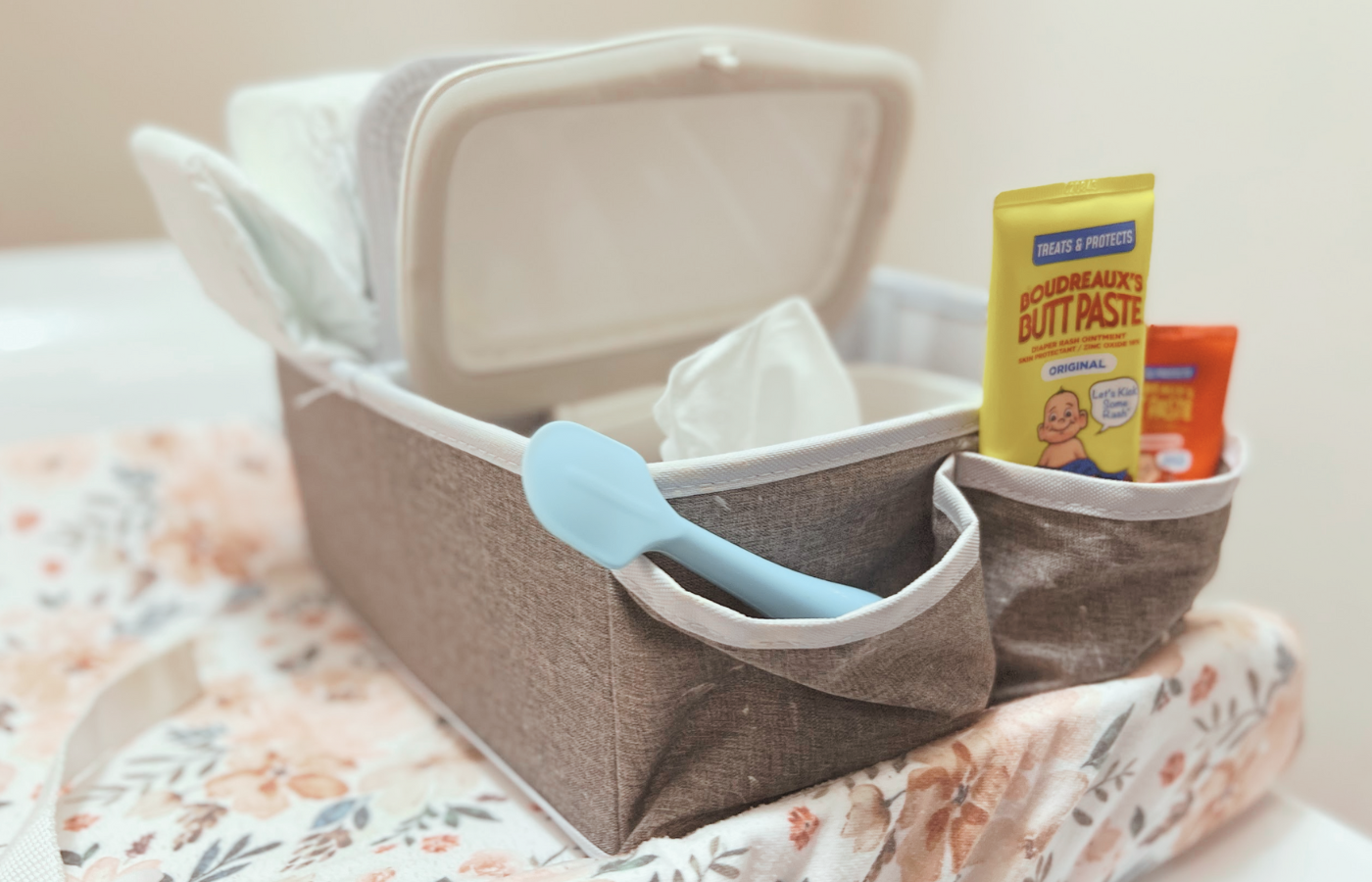The Uncharted Terrain of Exclusive Pumping: A Guided Tour
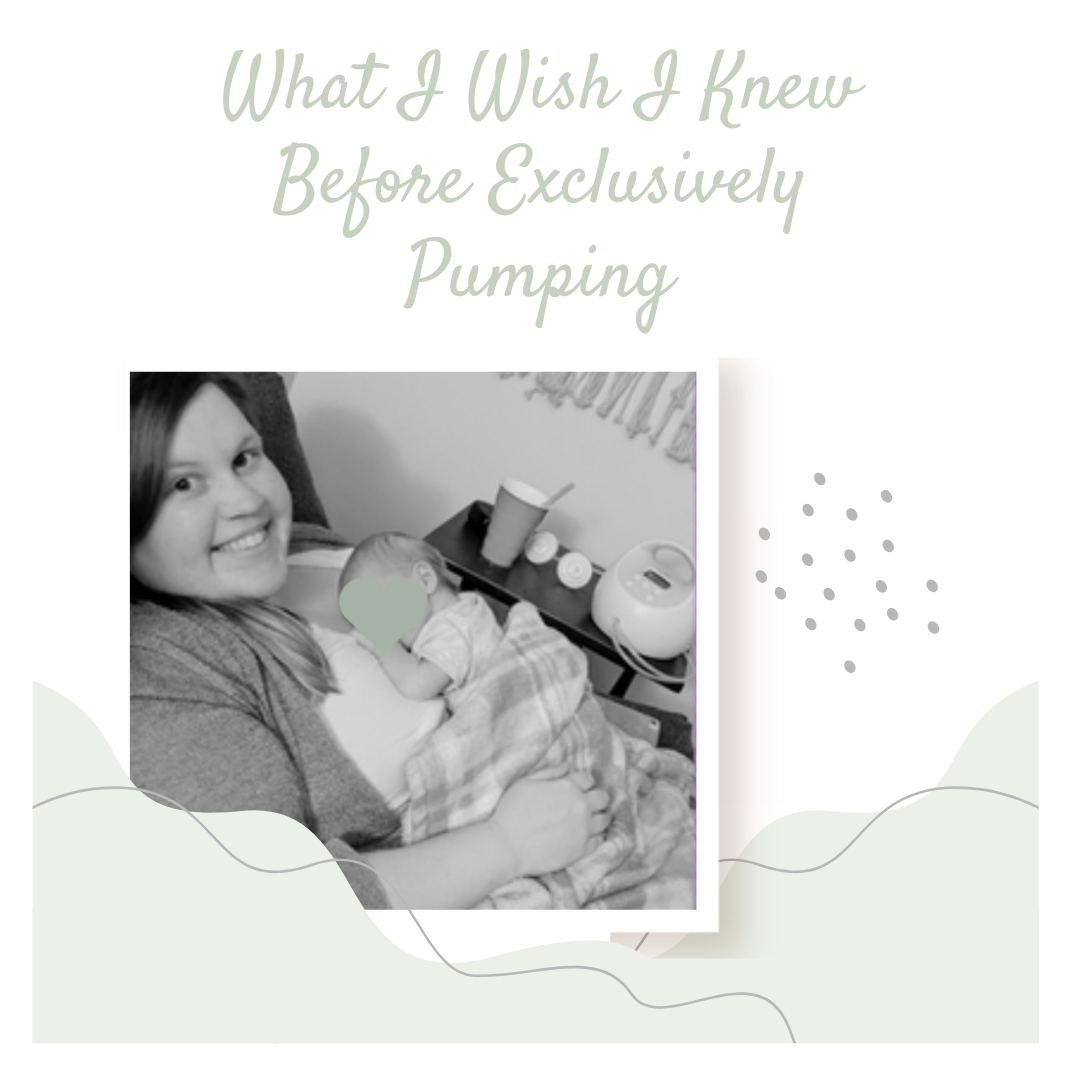
Hello, wonderful moms out there! If you’ve chosen the path of exclusive pumping, welcome aboard. From one mom to another, here’s a peek into what I didn’t see coming, and everything (and I mean everything) that made my journey a tad easier. Trust me, it’s not just about how often or how much you pump breast milk either; it’s the little things too!
Essentials for Exclusive Pumping
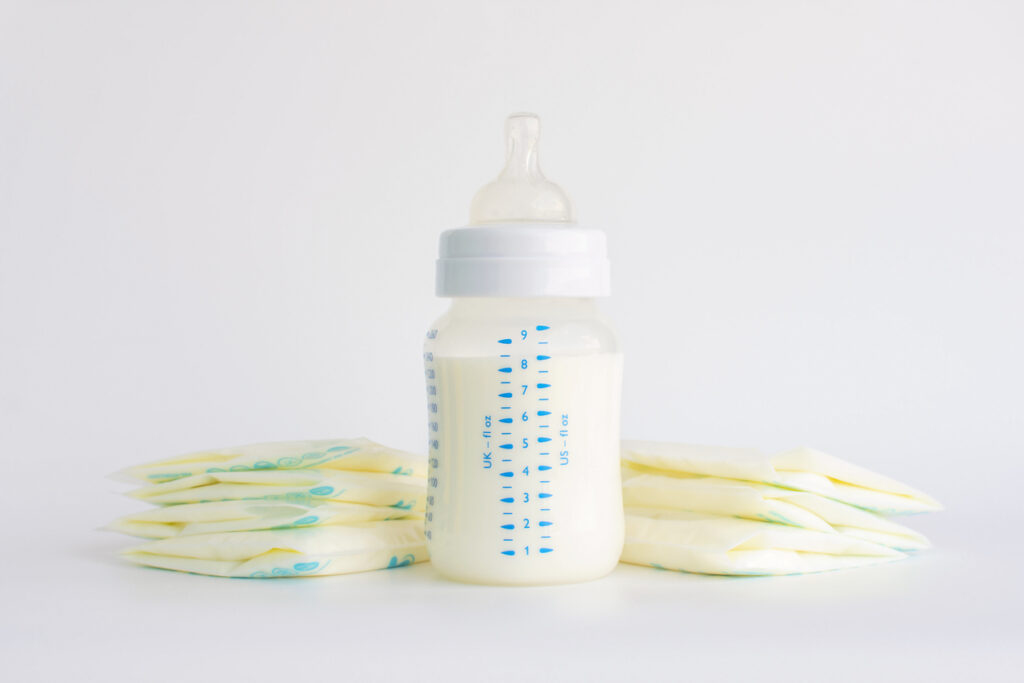
1. The Breast Pump: Your New BFF
Meet your new sidekick, the breast pump. It’s wise to invest in a double electric pump or even a hospital grade pump. They might sound fancy, but they’re your ticket to making each pumping session efficient.
2. Replacement Parts: Because Life Happens
Duck bill valves, flanges, back-flow protectors, tubes, bottles – oh my! You might not need them all the time, but when you do… you really do. There is nothing worse than going to do a pumping session and realizing that one of your parts needs to be replaced. I always try to have 1 to 2 extras of each part on hand.
3. Breast Pads, Pumping Bras, and More!
Breast Pads: The unexpected gush of milk can be a surprise! Whether you’re in the middle of a meeting, grocery shopping, or taking a nap, breast pads come in handy to save you from any unexpected leaks. They’re discreet and comfortably fit inside your bra, ensuring you remain dry and stain-free. The journey of exclusive pumping can mean an unpredictable milk supply at times, and these little pads can be lifesavers.
Pumping Bras: Remember the days when multitasking meant watching TV while munching on popcorn? Enter the hands-free pumping bra era. Especially designed for the exclusively pumping mom, these bras allow you to pump without holding the collection bottles, leaving your hands free. Whether it’s flipping through a book, having a snack, doing some light chores, or simply relaxing, a pumping bra is the ultimate companion for those longer pumping sessions.
Warm Compresses: Warmth can be a magical remedy when it comes to stimulating milk flow. Applying warm compresses a few minutes before you start pumping milk can help in making your pumping sessions more productive. It eases any potential discomfort, reduces inflammation, and can even lead to an increased milk output. Warm compresses can be bought or easily made at home with a warm cloth.
Breast Massager: Don’t underestimate the power of a good massage. It not only feels relaxing but can also help in alleviating any clogged ducts or milk build-up. A gentle massage in circular motions, starting from the outer part of your breasts and moving inwards can improve milk flow during your pumping sessions. Breast massages can be done by hand but I personally prefer a massager. The massager allows for maximum results with minimal effort.
Pump Replacement Parts: Wear and tear are natural. Having an extra set of pump parts, such as flanges, duckbill valves, back-flow protectors, tubing, and bottles can be a real time-saver, especially on those days when cleaning pump parts immediately after a session feels like a mountain of a task. Always being prepared ensures your exclusive pumping journey goes without any hitches.
Pump Bag: This one’s for the mom on the go! Having a designated pump bag means you can pack up your pumping essentials in a jiffy. It’s not just about storing your breast pump but also about keeping those small bits and pieces in one organized space. From replacement parts to a small container of coconut oil to reduce friction during pumping, this bag can carry it all. Plus, who doesn’t love a bag that screams style and functionality at the same time?
Milk Storage: When you’re working hard to provide breast milk for feeding your baby on, you need a reliable place to store it. Consider options like the Ceres Chill, which not only stores your precious milk but keeps it chilled too without lugging around a cooler. Now, isn’t that cool?
Freezer Milk Bags: These are not your ordinary plastic bags. Specifically designed to store pumped breast milk, they are leak-proof and can be stored flat or upright in the freezer. Each time you stash away a bag, it’s like depositing a little packet of nutrition for your baby’s future meals.
Dish Soap and Bottle Brush: The aftermath of pumping? Cleaning! A gentle, fragrance-free dish soap ensures your pump parts and bottles remain residue-free. Pair that with a bottle brush, specially designed to reach those nooks and crannies, and you’ve got a squeaky-clean set ready for the next round.
Dish Basin: Dedicate a basin just for your pump parts and bottles. It not only ensures hygiene but also means you’re not searching through a pile of dishes when it’s time to clean up.
Storage Containers: Perfect for keeping all those smaller pump parts organized. A storage container for your Spectra or any other pump can be a game-changer, ensuring that you aren’t scrambling around looking for that elusive piece right before a pumping session.
Permanent Marker: Keeping track of all that milk can be daunting. A fine-tip permanent marker helps label each bag with the date and time, Efficient and effective!
Basket or Storage Container: For all the extras – from replacement parts to breast pads, having a designated basket means you know where to look when you need something in a pinch.
Coconut Oil: A natural lubricant, a dab of coconut oil on the flanges can reduce friction, making the pumping experience more comfortable.
Water Bottle: Stay hydrated, mama! Drinking water not only keeps you fresh but can also aid in maintaining a good milk supply. Always keep a water bottle nearby during those pumping sessions, and take a sip or two between.
Not Essential, but Oh-So-Helpful!
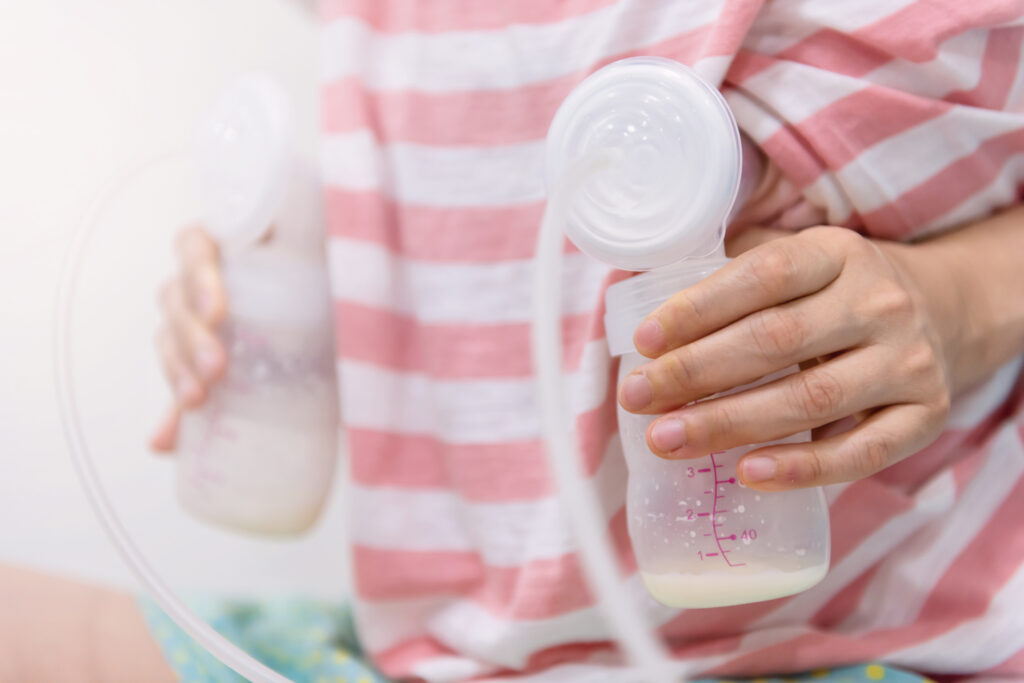
1. Wireless Pump like Elvie
Halfway through my Exclusive Pumping journey I began to see ads and influencers swearing by a wireless pump. I began to envision myself moving around the house and not hooking my pump parts every time I turned. After taking the plunge and making the investment it definitely became something I am grateful I was able to try, but it wasn’t something I relied on. The app, extra parts (5 parts per pump) to wash, and finicky auto shut off function made this a helpful non essential. I usually just turned to my Spectra to get a quick and efficient pump with less parts.
2. Dapple Wipes
When you need to clean your pump parts on the go or after a late night Pump session. Enter Dapple Wipes. These handy, environmentally-friendly wipes are designed for those times when you’re pumping away from home, or when the sink seems just too far away. Safe and effective, they allow you to clean your pump parts without needing water. Talk about a time-saver! And the best part? They’re formulated without fragrances, making them safe for baby and you.
3. Make Sure the Flanges Fit
If you’ve ever thought, “There must be a way to make this more comfortable,” you’re not alone! Flange cushions to the rescue! These genius inserts cushion the hard plastic flanges, providing a more comfortable pumping experience. They can also help with the fit of the flange, ensuring an optimal seal. Result? Less discomfort, more milk. Plus, for moms with sensitive skin or those prone to soreness, these cushions can be a game-changer. The thing is though, for myself as long as I had the correct size flange I found myself not needing the cushions.
Questions I Needed Answers For

Is It Okay to Just Exclusively Pump?
Absolutely! Choosing to exclusively pump is a valid feeding method, and it allows you to provide breast milk to your baby even if direct breastfeeding isn’t possible or if formula feeding is preferred.
How Long Should Exclusive Pumping Last?
Every mother’s journey is unique. Some might pump exclusively for a few months, while others go on for over a year. Listen to your body and consult with a lactation consultant to find what’s best for you.
How Often Should I Pump If Exclusively Pumping?

Ah, one of the most common questions in the exclusive pumping realm. Regardless of how many sessions you have during the day, you’ll want to aim for at least 120 minutes of pumping time in total daily, particularly in those crucial early months. This helps to establish a robust milk supply to feed baby.
For example, let’s break this down: I chose to pump 8 times a day, each session should last around 15-20 minutes. And just like that, at the end of the day I met the 120-minute goal! But of course, every mama and every baby is unique. Your journey might look a little different from mine or the mom next door. Listen to your body, watch your milk output, and adjust accordingly.
Remember to stay hydrated, take breaks, and nourish yourself well. Your body is working hard, so treat it kindly. And if ever in doubt, reaching out to a lactation consultant can offer specialized guidance tailored to your unique journey.
The Unexpected Twists and Turns

Who knew letdowns could feel like tiny electric shocks? Or that the exclusive pumping schedule would be harder to stick to than my New Year’s resolution? And oh, my phone and I became inseparable during those long pumping sessions.
Staying Motivated Amidst Challenges
When I began my exclusive pumping journey, I never anticipated some of the things I encountered along the way. There were days when I would glance at my pump and think, “Not you again.” Oh, and those influencers who manage to pump, bake a three-tier cake, and somehow look like they’ve just walked off a fashion runway? Major props to them, but that wasn’t my story.
Pumping, especially while trying to do seemingly simple tasks like dishes or laundry, was a genuine challenge. Remember the flanges I mentioned earlier? Yeah, they didn’t play well with my attempts at multitasking. Every time I’d bend or reach, I’d risk a milk spill or find myself readjusting the pump parts. And if you’re thinking, “Couldn’t she just sit still?” Well, that is easier said than done.
But here’s where the optimism kicks in. Every single drop of breast milk you provide is akin to a golden elixir for your little one. It’s packed with nutrients, antibodies, and most importantly, love. Each pumping session, no matter how tedious, is a testament to your journey.
How much milk should you be producing when exclusively pumping?
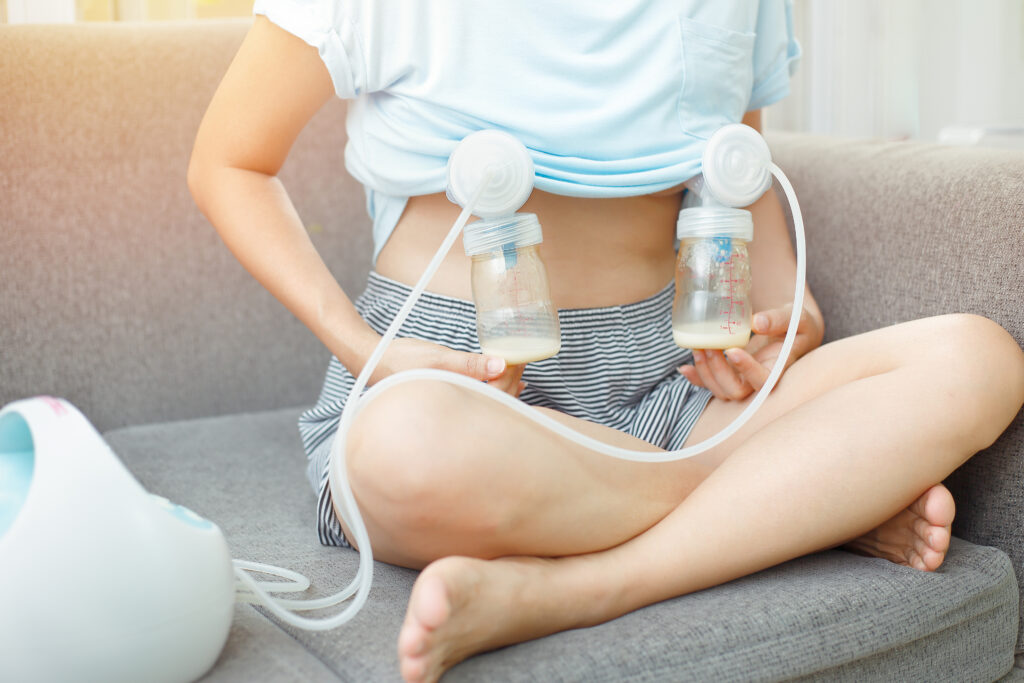
First things first, mama. Every body is different. And just like there’s no “one-size-fits-all” in clothing, there’s no standard amount of milk every mother should produce. But let’s delve into the nitty-gritty for some general guidelines.
On average, babies consume about 25-30 ounces of breast milk a day between the ages of one month and six months. If you break this down, it’s roughly 1-1.5 ounces of milk every hour. Something I didn’t know when I first started pumping is that it is totally normal to get 1-3 ounces each pumping session. So don’t compare yourself to someone who may be experiencing an oversupply.
In the early days postpartum, especially the first week, it’s common to produce a smaller amount. We’re talking colostrum here, the thick, golden milk that’s jam-packed with nutrients. You might notice just a few milliliters each pumping session, but that’s absolutely okay! Your baby’s tummy is the size of a cherry at birth, so it doesn’t take much to fill them up.
As weeks go by, your milk supply typically ramps up. By the end of the first month, you might be producing anywhere from 20-30 ounces a day. Some days, you might feel like a dairy cow producing more milk than your little one can handle. And on other days, you might worry if it’s enough milk. That’s all part of the journey.
But remember this golden tidbit: the more you pump, the more milk you tell your body to produce. It’s the beauty of supply and demand.
Tips to Ensure a Steady Milk Supply:
- Stay Hydrated: It’s simple math – to produce liquid, you need to intake liquid. Aim for at least 8 glasses of water a day.
- Eat a Balanced Diet: Nutrient-rich foods can help boost milk production. Think oats, spinach, and even some dark chocolate (yes, it’s a win-win!).
- Rest When You Can: Easier said than done, I know. But even a short nap can work wonders for your milk supply.
- Consistent Pumping Schedule: Keeping a regular pumping schedule helps maintain and even increase milk supply. Remember our 120-minute rule?
- Seek Support: Whether it’s from a lactation consultant, a fellow exclusively pumping mom, or your partner, never hesitate to seek help if you’re concerned about your milk supply.
Lastly, and most importantly, trust in your body. You’re built for this, and even on days it feels tough, remember, your body knows what to do. Every ounce is a testament to your love and dedication.
Have a cleaning system in place
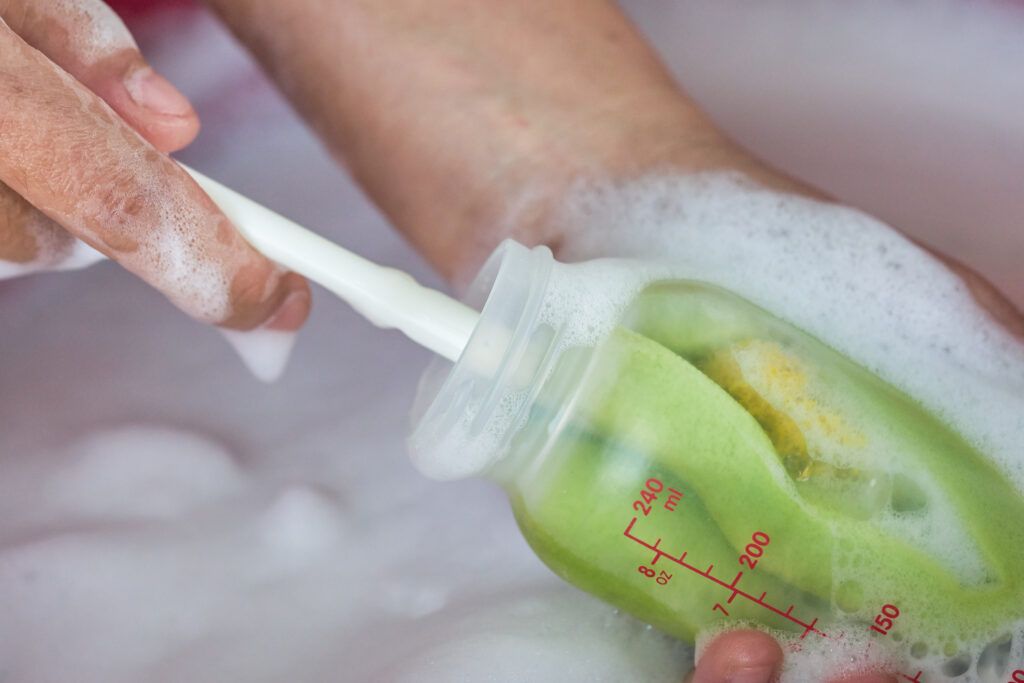
Imagine this: It’s 3 AM, your little one just had a feed, you’ve completed another pumping session, and there’s a pile of pump parts staring at you. The last thing you want is a tedious cleaning process, right? But with a good system in place, this daunting task can become a breeze. Let’s break it down.
1. Organize Your Pumping Station: Before even starting, make sure you have everything you will need to pump well within arm’s reach. A dish basin dedicated only for your pump parts, some fragrance-free dish soap like Dapple, a bottle brush, and a drying rack can make a world of difference.
2. Quick Clean After Every Session: After each pumping session, rinse your pump parts with cold water to prevent milk residue from drying. This makes the deeper cleaning process later on much easier!
3. Deep Clean Daily: Once a day, especially if you’re using the pump multiple times, give all parts a good scrub with warm soapy water. Using Dapple wipes can help with on-the-go cleaning, ensuring no milk residues are left. Rinse well and let them air dry on a clean towel or a dedicated drying rack.
4. Sterilize Weekly: While daily cleaning removes most of the germs, a weekly sterilization can give you that extra peace of mind. Boil the pump parts in water for about 5 minutes or use a microwave steam sterilizer bag.
5. Storage for Clean Parts: Consider a basket or storage container, labeled for your clean Spectra parts, so everything has its place. Not only does this keep things hygienic, but it also ensures you’re not scrambling for parts during your next pumping session.
6. Always Have Backups: It’s always good to have some replacement parts on hand, like duck bill valves, back-flow protectors, and tubes. If something goes amiss or wears out, you won’t have to panic. Also duck bill valves and tubing are the parts that are replaced most frequently approximately 1-2 times a month.
Bonus Tip: If you’re frequently on the go or returning to work, invest in a wet bag. It’s an eco-friendly alternative to Ziploc bags and perfect for storing used pump parts until you can get home to clean them.
Cleaning might feel time-consuming, especially when you’re juggling a million other responsibilities. But with a solid system in place, it becomes just another step in your routine. And remember, cleanliness ensures that the precious breast milk you’re working so hard to provide is safe and pure for your baby.
We are in this together!
Dear new mama, know that while the path of exclusive pumping might be speckled with challenges, it’s also dotted with countless rewards. Your baby, thriving on your breast milk, those contented gurgles after a feed, and the bond you’re forging – it’s all so worth it. Equip yourself with the right tools, lean on your support system, and most importantly, believe in yourself. The Uncharted Terrain of Exclusive Pumping: A Guided Tour


